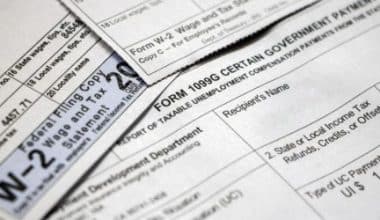Supply chains must be as flexible as possible in order to increase profitability. Also, in order to ensure that supply chains are productive for inventory and, eventually, sales, accurate demand planning is essential. In the course of this post, we will learn the basics of demand planning. This also includes demand planning salary, jobs, and job description.
What is Demand Planning and How Does It Work?
Demand planning is a supply chain management method for anticipating or forecasting product demand to ensure that goods can be supplied and consumers are satisfied. The aim is to strike a balance between having enough inventory to satisfy consumer demands and avoiding a surplus scenario. However, demand is often influenced by a number of factors. Basically, some of these factors include labor force changes, economic shifts, extreme weather, natural disasters, or global crisis events.
What are the Different Aspects of Demand Planning?
Demand planning encompasses many facets, with the following three being the most important:
#1. Management of a Product Portfolio
Brand portfolio management is responsible for overseeing the entire product lifecycle. Basically, from the launch of a new product to end-of-life planning. For the most part, product lines are often interdependent. But understanding how new products affect demand for other products is critical to determining the overall product mix needed to optimize market share.
#2. Statistical Projection
Statistical forecasting uses powerful data algorithms to construct supply chain forecasts on the basis of historical data. It is critical to determine the accuracy of each model, recognize outliers and exclusions, and comprehend assumptions in this field. Statistical forecasting can also be a useful tool for measuring seasonal changes. For example, the surge in holiday shopping that occurs between October and December for retailers, or the increase in yard equipment sales in the spring months.
#3. Trade Promotion Management
Demand can be influenced by trade promotions or marketing events, especially in the retail industry. trade promotion’s aim is to link a brand with a buyer. This is often feasible through an in-store giveaway, discount, or promotion. Half the time, these events may influence product demand.
What Is the Importance of Demand Planning?
Businesses lose money if a product is unavailable for purchase because it is out of stock. They literally run the risk of losing consumers to a rival over time. Sitting on a large amount of unused inventory, on the other hand, wastes both space and production costs. Business leaders will keep ahead of market trends and make more strategic decisions through demand planning. This is achievable while remaining attentive to their customers’ needs.
Demand Planning Best Practices
Demand planning is a multi-step process that relies on the right resources, data, and procedures. While there are always variations in the process based on product placement, inventory requirements, and organizational priorities, the following are some best practices to remember:
#1. Use the Appropriate Software
When it comes to enterprise resource planning (ERP) programs, there are tons of options. So picking the right one can be difficult. Hence, when searching for an ERP software, consider the tool’s ability to manage forecasting complexities, as well as the provider’s credibility, reporting capabilities, and the transparency of the forecasts it generates
#2. Gather and Prepare Data
Demand planning is now more than ever driven by data. Data mining and aggregation that can define areas for change or reaction, as well as real-time insight into product movements and metrics reports that paint a simple picture, can help to build more agile process modeling.
#3. Establish Process Models
A demand planning model that lacks a fixed mechanism results in confusion. It’s all too easy to mix up processes with the knowledge that’s just a collection of commonly accepted data about an entity. This, however, makes it impossible to keep someone accountable and harms overall results. The steps in the demand preparation process for most businesses are as follows:
Data collection and preparation|| Initial projections|| Market intelligence incorporation|| Bottom-up predictions are compared to top-down financial and revenue forecasts using sales targets and financial reports.|| Finalize your forecast.|| Monitoring of performance using real-time analytics|| Monitor and implement
Meanwhile, demand planners who are successful typically create a pilot version of the plan on the basis of historical data or descriptive analytics. They also make daily changes and have a team dedicated exclusively to developing the strategy, putting it into action, eliminating error and bias, and designing implementation processes.
Difference between Demand Forecasting vs. Demand Planning
Demand forecasting and demand planning are often used interchangeably. They are however not the same thing, even though they are inextricably connected in the supply chain management process. Basically, o ne (forecasting) is a necessary component of the other (demand planning).
Demand planning is a procedure, and reliable forecasts are the outcome of a successful demand planning procedure. Furthermore, d emand planning is an essential part of the S&OP process (Sales and Operations Planning). The analysis data science approach an organization uses to arrive at these numbers is an important part of the demand planning process.
What Is Demand Forecasting and How Does It Work?
Forecasting refers to the method of anticipating demand or revenue in the framework of supply chain management (which are two in the same). Demand forecasts that are highly reliable and deliver on negotiated strategies are needed for effective demand planning.
Best Practices in Demand Planning and Forecasting
Accurate predictions are extremely difficult to come by, let alone trust. So, n order to calculate reliable forecasts, demand planners must have the processes and know-how in place. This is contingent on a firm’s ability to:
- Understand the full range and variety of forces that have influenced sales in the past. These factors may include consumer demand signals, industry dynamics, sustainable marketing, and trade investments.
- Collect historical data on these variables from both internal and external sources. These could include strategic data collaborations with companies like Nielsen. Historical shipments and consumption data at both the chain and store level; own and competitive marketing and trade investments are all important data points. Weather, seasonality, ingredient and health patterns, online search activity, social media mentions, and other brand-related factors are all factors to consider.
- Have the necessary technical infrastructure and demand and/or supply planning tools on hand to handle the massive amounts of data. Businesses use a range of forecasting approaches and strategy techniques to achieve their goals. Some demand planners prefer the “old school” approach of forecasting demand solely using spreadsheets (such as Excel), which can be efficient. Demand planners are increasingly turning to a forecasting method, also known as a demand planning platform, that can manage large data sets.
- To measure future demand, create forecasting models that combine numerous data sets and statistical factors.
- Iterate these models continuously to improve their accuracy, ultimately resulting in machine learning models that use Artificial Intelligence to measure real-time demand predictions.
Why Are Accurate Forecasts So Essential in the Supply Chain?
Demand planners whose job description includes estimating revenue forecasts bear a lot of responsibility. For the most part, distribution, inventory, and production departments will have a good understanding of what they need to do to reach demand goals if demand forecasts are extremely accurate. When demand forecasts are off, the domino effect can be devastating to a company’s bottom line:
- Customers’ service levels deteriorate.
- Working capital is increase.
- Out-of-stocks and obsolescence rise.
- The cost of transfer and repositioning increases.
- Negotiating leverage with vendors dwindle
The benefits of using the right resources to create reliable sales forecasts for demand planners, on the other hand, are amazing. Distribution, inventory, and production all benefit from the supply chain. However, this is only accurate if data is centralized across the supply chain.
Demand Planning Job Description
Demand planners often work in retail or manufacturing settings, estimating demand for goods in a supply chain based on projections and experience. In order to do so, they consider factors such as a company’s product life cycle, demand trends, and market uncertainty.
Furthermore, forecasts from demand planning can benefit businesses in a variety of ways. They include setting more precise inventory targets to avoid over-forecasting product lines and avoiding excess inventory. However, demand planners work full-time hours and, depending on the employer, can report to procurement, product, or sales manager.
Duties and Responsibilities of a Demand Planner
While a demand planner’s precise job descriptions are dictated by where they work, there are some common tasks. The key tasks associated with the work, according to our analysis of job listings, are:
#1. Creating Forecasts
To analyze and verify gathered data, demand planners use statistical modeling tools. These figures may be used to present data to sales and marketing teams, as well as business executives.
#2. Improving Projections
Demand planners must keep in mind that they can always build on their initial forecasts. This will better help to satisfy consumer needs. Furthermore, reviewing statistical forecast models and applying error analysis techniques to improve forecasting, as well as reviewing customer sales data, are essential skills.
#3. Work closely with the sales and marketing teams.
To provide more reliable predictions, demand planners consult with key account managers to review expected product promotions. This will literally help you in carrying this demand planning job description .efficiently.
#4. Report to Key Officials Within the Company
Demand planners teach key company players how to make accurate product predictions. Furthermore, they teach how to monitor and evaluate forecasts for the best performance.
#5. Establish and Maintain a Variety of Relationships
Relationships between the company and buyers, dealers, brokers, procurement managers, and internal sales staff must all be effectively nurtured and maintained by demand planners.
Salary Prospects in Demand Planning
The national median annual salary in the demand planning sector is $63,438. This basically implies a median hourly wage of $30.49, according to PayScale‘s research on demand planning salary.
Furthermore, a demand planner in the 10th percentile earns $44,927 per year (or $21.60 per hour), while the highest-paid in the industry earns $92,157 per year (or $44.30 per hour).
The Future of Demand Planning in the Supply Chain
Supply chain and demand planning, like many other business functions, are becoming more digital. Over the years, machine learning advances in supply chain applications are making it possible to adjust and update forecasts in real-time. This also enables inventory to run leaner while still meeting demand.
So, understanding how to use modern business architectures and integrating artificial intelligence and machine learning programs that can help maximize a lean, agile, and data-driven strategy will reveal new ways to cut costs in operations, boost sales, and give a greater competitive edge.
What Is Demand Planning KPI?
A key performance indicator for demand planning is a signal or alert indicating the condition of a particular measure. By presenting them prominently on a team member’s dashboard, the most pertinent information driving the demand and supply system is accessible to planners and managers.
What Are the Three Key Measures of Demand?
Actual demand, repressed demand, and latent demand are the three basic categories of demand identified by Buhalis (2004).
Is Demand Planning a Skill?
Analytical aptitude and data modeling: Demand planners must have the ability to work with huge datasets and construct diagnostic, predictive, and prescriptive analytics models.
Is Demand Planning Difficult Job?
Demand planning can be quite difficult. Here are the top five obstacles faced by demand planners. In conclusion, we will describe how your company might overcome these obstacles.
What Is Demand Planning vs Forecasting?
Demand forecasting is a way to figure out what is likely to happen, and demand planning is how to make it happen. It’s making sure that each part of the supply chain works in line with the forecast in the most efficient and cost-effective way possible.
Conclusion
As a business owner, details like salary and job descriptions are pretty vital as you delve into the world of demand planning.
Conversely, if you intend to become a demand planner, this is also a great start for you seeing that all you need is covered in this post. Trust me, you do not want to start this without prior knowledge on demand planning salary and job description.






